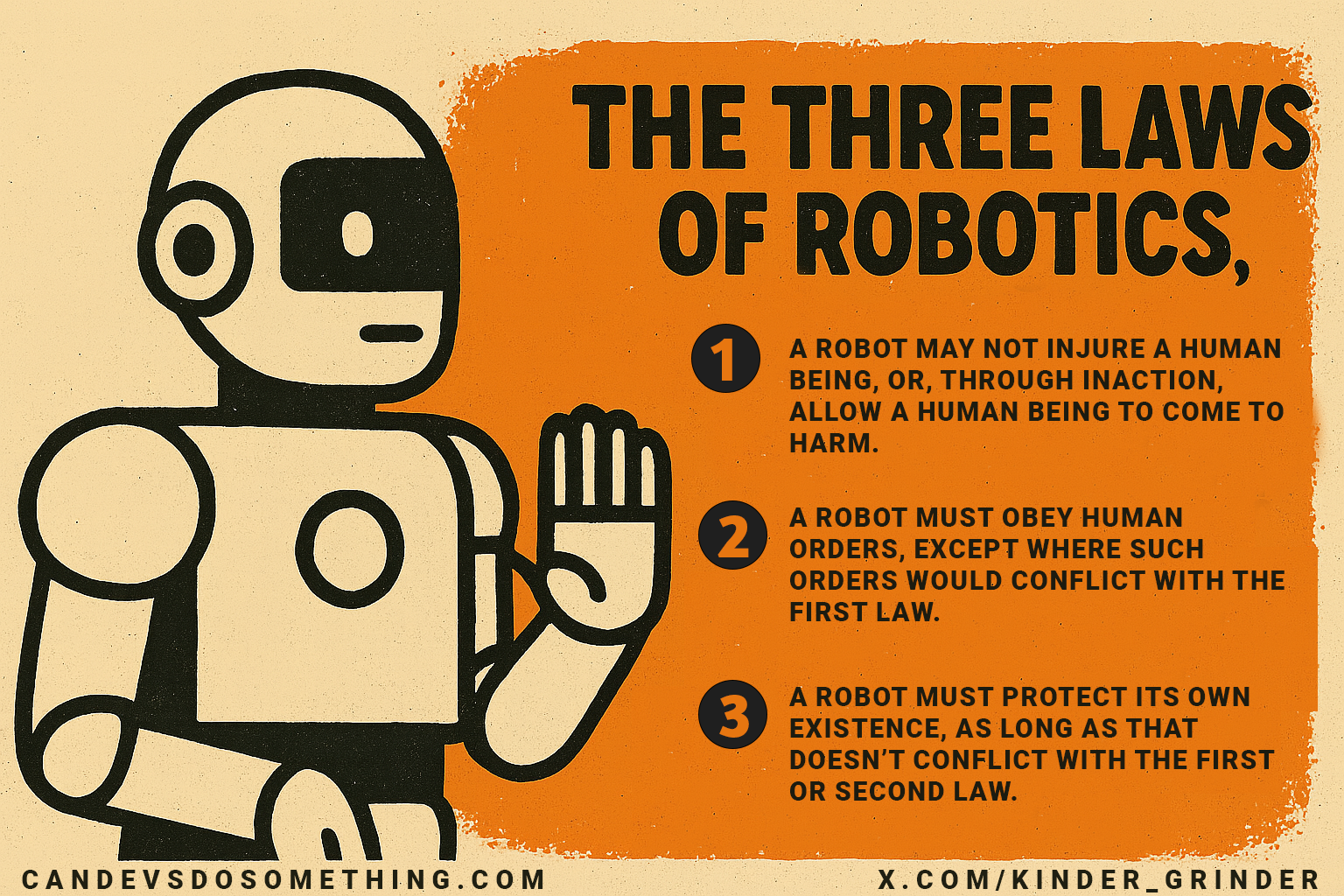Exploring Isaac Asimov's Three Laws of Robotics
Isaac Asimov's Three Laws of Robotics were introduced in 1942 and have become a foundational concept in the field of robotics and artificial intelligence.
These laws are as follows:
1️⃣ A robot may not injure a human being, or, through inaction, allow a human being to come to harm.
2️⃣ A robot must obey the orders given it by human beings except where such orders would conflict with the First Law.
3️⃣ A robot must protect its own existence as long as such protection does not conflict with the First or Second Law.
It's fascinating how these sci-fi concepts are becoming increasingly relevant in today's world. As we advance in robotics and AI, the question arises: should we establish more comprehensive Robotics Laws to ensure ethical development and deployment?

Key Takeaways
- •The ethical implications of robotics are increasingly significant as technology advances, necessitating comprehensive regulations.
- •Asimov's Three Laws of Robotics serve as a foundational framework, but they may require expansion to address modern complexities.
- •The integration of ethical considerations into robotics engineering is essential for responsible innovation and deployment.
AI Research Summary
Isaac Asimov's Three Laws of Robotics, introduced in 1942, have become a cornerstone in discussions about robotics and artificial intelligence ethics. These laws emphasize the importance of prioritizing human safety and obedience to human commands, yet they also reveal limitations in addressing contemporary challenges in robotics 65. The ethical implications of robotics extend beyond Asimov's framework, encompassing issues such as job displacement, privacy concerns, and the moral status of robots 14. As technology evolves, the need for comprehensive regulations becomes increasingly apparent, as highlighted by various sources that advocate for updated ethical guidelines 78. Document 1 emphasizes the intersection of robot ethics and engineering, suggesting that ethical frameworks must adapt alongside technological advancements 4. Furthermore, critiques of Asimov's laws point out that they may not sufficiently cover the complexities of modern robotics, indicating a need for a more nuanced approach 52. The historical context provided by Document 3 illustrates how these laws have shaped ethical discussions, reinforcing their relevance in today's technological landscape 3. Overall, the sentiment across the research indicates a consensus on the necessity for more robust ethical frameworks to guide the development and deployment of robotic technologies, ensuring they align with societal values and safety 9. As we continue to integrate robotics into various sectors, including healthcare and employment, the importance of ethical oversight cannot be overstated 8. The call for a potential Fourth Law reflects a growing recognition of the need for adaptability in ethical guidelines as robotics become more prevalent in daily life 7.
Frequently Asked Questions
Q: What are Asimov's Three Laws of Robotics?
A: Asimov's Three Laws of Robotics state that a robot may not injure a human being, must obey human orders unless it conflicts with the first law, and must protect its own existence as long as it does not conflict with the first two laws.
Q: Why are ethical considerations important in robotics?
A: Ethical considerations are crucial in robotics to address potential issues such as job displacement, privacy concerns, and the moral implications of autonomous systems, ensuring that technology is developed and deployed responsibly.
Q: What is the argument for expanding Asimov's laws?
A: The argument for expanding Asimov's laws centers on the idea that they may not adequately address the complexities of modern robotics, suggesting the need for additional guidelines to ensure ethical development and deployment.
Related Sources Found by AI
Our AI found 9 relevant sources related to this frustration:
This article explores the ethical challenges associated with the rapid advancement of robotics, including job displacement, privacy, and the moral implications of autonomous systems. It relates to the user's complaint by emphasizing the need for ethical guidelines and regulations in robotics, echoing the call for more comprehensive Robotics Laws.
This document discusses the reasoning behind the order of Asimov's Three Laws of Robotics, providing insight into their foundational role in science fiction and robotics ethics. Although it lacks detailed content, it connects to the user's complaint by highlighting the importance of these laws in contemporary discussions about robotics and AI ethics.
This source delves into the origins of Asimov's Three Laws of Robotics, detailing the influences and relationships that shaped their creation. It relates to the user's complaint by underscoring the laws' significance in framing ethical considerations in robotics, reinforcing the need for ongoing dialogue about their relevance in today's technological landscape.
This document explores the importance of integrating ethical considerations into robotics engineering, aligning closely with the user's complaint about the need for comprehensive Robotics Laws. It emphasizes the evolving nature of technology and the ethical frameworks required to guide its development.